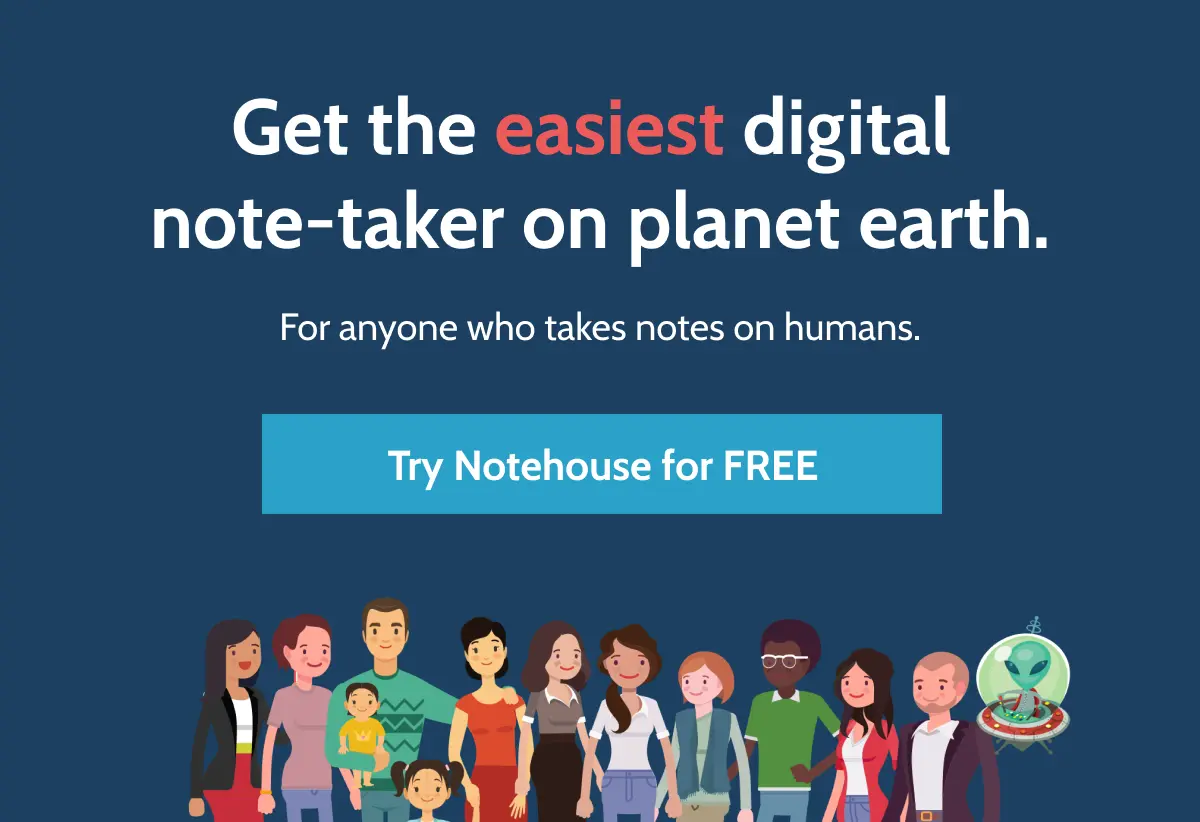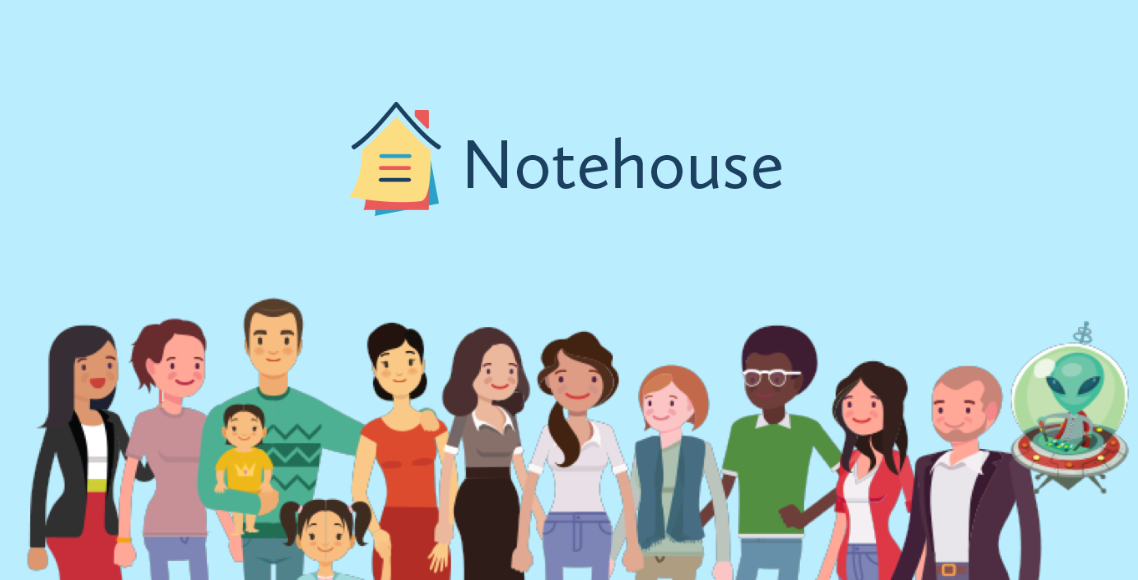How to Become a More Professional Note Taker: 5 Tips
%20.png.png)
Taking meticulous notes is a crucial part of many professions: human services, social work, non-profits, and many more. One aspect these jobs have in common is their reliance on a clear narrative, or “one version of the truth,” which depends on superb note taking. But when your notes lack precision and polish, they cause unwanted friction—like forgetting your last interaction with a client or misremembering the next action items.
Fortunately, you don’t have to be a professional note taker to create clear, thoughtful notes. It’s a skill you can build regardless of your typing speed, occupational specialty, or knowledge of shorthand. And while this guide won’t show you how to start a career as a full-time note-taking machine, we will help you become the best note taker that you can be.
If you’re battling with a constant deluge of notes, these five tips will help you take back control.
Tip #1: Know What to Write (and When to Write It)
Though it may sound like a no-brainer to some, choosing what you note and when to jot it down can make a big difference in your recall and client engagement. Notes that are overflowing with fluff and filler will slow you down during your next session, and they’ll prove less useful to team members. Instead, focus on the key points that will jog your memory when you go back through.
Also, time your note taking so it doesn’t separate you from the session at hand. If you’re always busy writing down every detail, you’re removed from the task or person in front of you. Be present, listen, and take an intentional (but mutual) pause to write down the details. Half-hearing a client’s needs while your nose is in your notes is a surefire way to make them disengage.
Tip #2: Keep a Neutral Tone
Neutral notes are always best. When you write in a biased or opinionated way, you actually lose important nuance and create a barrier to objective observations. Building obstacles in this way can result in inconsistent decision-making, and in the case of social work or human services, adverse client outcomes. When in doubt, stick to the facts—especially when you’re sharing your notes with colleagues.
Remember: even routine paperwork can have a massive impact on a client’s life or the outcome of a task. Phrases that can be misunderstood out of context can easily brand them with an unfair or incorrect characterization. Whether you’re penning case notes, research abstracts, or donor proposals, try to use language that is difficult to misinterpret. Cultivating a vocabulary as a professional note taker that is non-emotional, gender-neutral, person-first, and clear at face value.
Tip #3: Choose a System (and Stick With It)
In social work and human services, a number of popular not- taking systems have proven quite effective: SOAP, DAP, BIRP, GIRP — the list of acronyms goes on. Each of these has its own pros and cons, and most of them thrive in a particular context. Your workplace likely already has its own note-taking system of choice, so the first step is ensuring your notes line up with that preference. However, even these frameworks leave a lot of wiggle room, which is why consistency is so crucial.
Once you’ve chosen a note-taking approach, stick with it. If you need to go “off book,” put your unorthodox additions in a supplementary document. While these acronym-heavy systems can’t account for every eventuality, they do provide a familiar foundation you can understand at a glance. Your colleagues will know where to look for specific information, and you’ll be ready to jump into a session faster because your notes are all formatted the same way.
Tip #4: Use an Effective Note-Taking Tool
So far, we’ve shared three tips that you can put into practice today. But if you’re struggling under the weight of a note-taking tool that doesn’t flex to match your unique workflow, you’ll find these tactics tough to maintain. A platform that adapts to your methods and synergizes with your natural note-taking process will be quicker, clearer, and more complete.
The more flexible your note-taking tool can be, the better; filters, tags, and custom organization all play a role in molding the perfect note sidekick. Meanwhile, decide whether you’d benefit from a user-friendly interface and a more manageable learning curve. If you’re especially tech-averse, you’ll want a note-taking tool that matches your natural flow rather than one that forces you to learn its rigid workflows.
Tip #5: Secure Your Notes
In many professional settings, notes reveal highly sensitive information about clients, donors, and operations. Just like any medical record, documents like case notes are protected under the Health Insurance Portability and Accountability Act, or HIPAA. That means any unauthorized access can result in hefty fines and regulatory penalties, including prison. Both digital and paper notes must follow rigid storage and access guidelines to be compliant.
Look for privacy-oriented note-taking tools that use HIPAA-compliant database servers and employ the latest security best practices. A secure note management platform will offer authorization monitoring, internal access controls, two-sided encryption models, and regular security audits to help you meet regulatory requirements and protect your clients’ privacy.
The Power of Professional Note Taking
Notes give us the power to reconnect with the person we’re with, even if it’s the first meeting in months. But note-taking tools shouldn’t make that experience difficult. If the choice is between floundering under a stack of case notes or actually engaging with a client, we’ll pick the human every time. Fortunately, you don’t have to choose.
Notehouse is a cloud-based note management platform that allows you to write, store, and access notes from anywhere—not just the office. With Notehouse, you can have clear, organized notes and be fully present with the person in front of you. No more scrambling for context, and no more digging for details of the last interaction.
So, why wait to jumpstart your transformation into a professional note taker? Try Notehouse today and put these tips into action!
and put these tips into action!
%20.png)

.png.png)
.png.png)
.png.png)